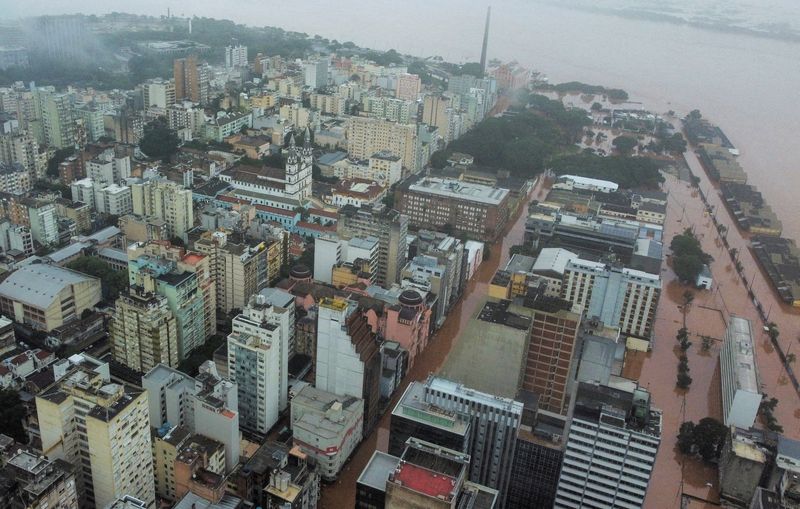SAO PAULO (Reuters) -Heavy rains in Brazil's southernmost state of Rio Grande do Sul this week killed at least 55 people, local authorities said on Saturday evening, while dozens remain unaccounted for.
Rio Grande do Sul's civil defense authority said 74 people were still missing and more than 69,000 had been displaced as storms in the last few days have affected nearly two thirds of the 497 cities in the state, which borders Uruguay and Argentina.
The local authority said it is now investigating whether another seven deaths were related to the storms, after earlier in the day it had reported a total of more than 55 deaths.
Floods destroyed roads and bridges in several regions of the state. The storm also triggered landslides and the partial collapse of a dam at a small hydroelectric power plant. A second dam in the city of Bento Goncalves is also at risk of collapsing, authorities said.
In Porto Alegre, the capital of Rio Grande do Sul, the Guaiba lake broke its banks, flooding streets.
Porto Alegre's international airport has suspended all flights for an indefinite period.
State Governor Eduardo Leite told reporters on Saturday evening that Rio Grande do Sul would need a "Marshall Plan" to recover from the storms and its consequences, referring to a plan for Europe's economic recovery after World War Two.
Brazil's President Luiz Inacio Lula da Silva, who had visited Rio Grande do Sul on Thursday, will travel back to the state on Sunday to follow the rescue efforts, his chief of communication Paulo Pimenta said on Saturday.
Lula said on X that his government is in constant contact with state and cities' authorities to support the region with whatever they need.
Rains are expected in the northern and northeastern regions of the state until Sunday, but the volume of precipitation has been declining, and should be well below the peak seen earlier in the week, according to the state meteorology authority.
Still, "rivers water levels should stay high for some days", Leite said earlier on Saturday.

Rio Grande do Sul is at a geographical meeting point between tropical and polar atmospheres, which has created a weather pattern with periods of intense rains and others of drought.
Local scientists believe the pattern has been intensifying due to climate change.
